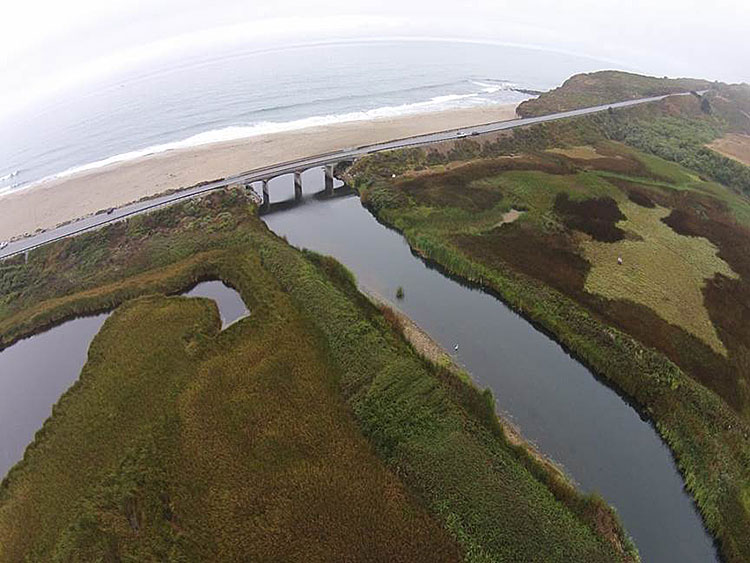
The Scotts Creek project will develop a restoration design that includes a 21st-century transportation corridor and restoration of the ecological condition and dynamism of the Scotts Creek lagoon, marsh, and dune system while also planning for climate change resiliency. The proposed planning efforts will set the stage for enhancing the entire lagoon system so that it has the capacity to support a more vibrant, resilient ecological community.
“This project models a new planning paradigm for major transportation projects by understanding and addressing ecological needs first, and designing transportation infrastructure improvements around those needs. It is a model in which the resiliency of ecosystems and infrastructure are integrated and planned for holistically from the very beginning,” said RTC Executive Director Guy Preston.
The grant awarded to the RTC will be used to continue critical work that builds off existing ecological data and tools that the project team, made up of staff from the RTC, California Department of Transportation, Resource Conservation District of Santa Cruz County, Alnus Ecological, and Environmental Science Associates, has developed to-date along with both state and federal resource agencies. Once implemented, the restored ecosystem will allow for increased habitat complexity and quality and renewed landscape connectivity between the beach and marsh. The project will also result in restoration of 10-20 acres of flooded marsh plain habitat and 3-4 acres of new wetland habitat.
•••
For more information: www.sccrtc.org